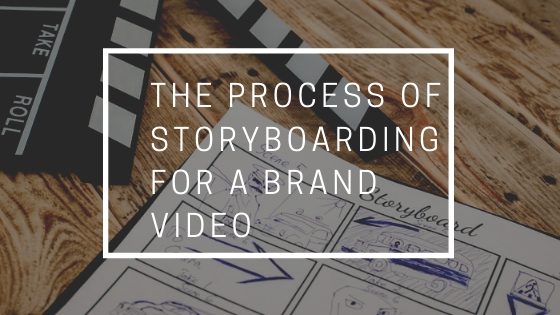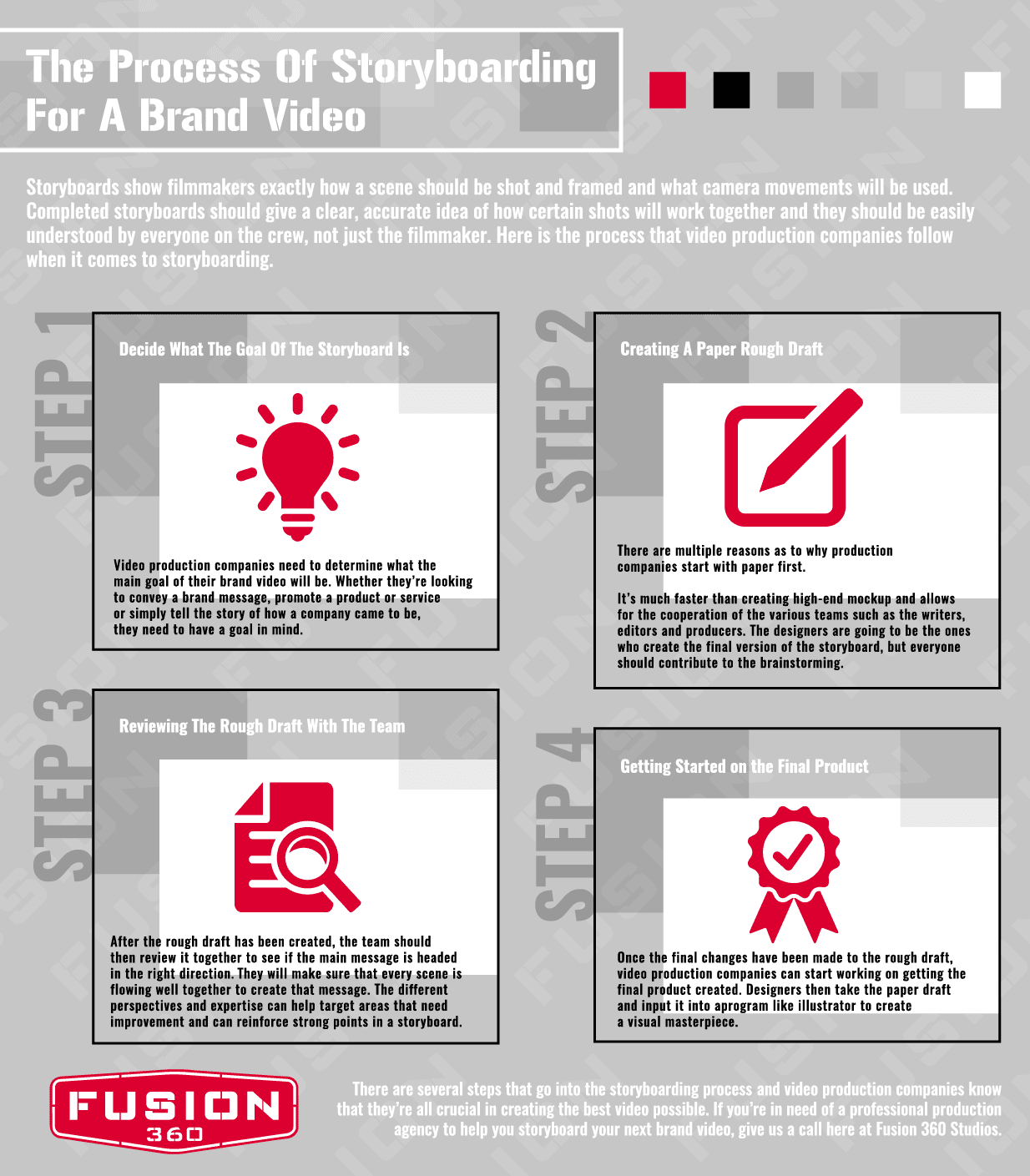
Storyboarding, to video producers, is what script writing is to writers; while they still use the script to create a project, producers rely heavily on storyboarding to make sure that every scene comes out as planned. If you’re not too familiar with what storyboarding is, it’s essentially a sequence of images that represent the intended shots of a film. Storyboards show filmmakers exactly how a scene should be shot and framed and what camera movements will be used.
Completed storyboards should give a clear, accurate idea of how certain shots will work together, and they should be easily understood by everyone on the crew, not just the filmmaker. Now that we’ve touched on the structure of a storyboard, here is the process that video production companies follow when it comes to storyboarding.
Decide What the Goal of the Storyboard Is
Video production companies need to determine what the main goal of their brand video will be. Whether their looking to convey a brand message, promote a product or service, or simply tell the story of how a company came to be, they need to have a goal in mind.
Creating a Rough Draft
Before anything, a rough draft of the storyboard should be created. There are multiple reasons as to why video production companies start with paper first. First off, it’s much faster than trying to create some high-end mockup. This allows for the cooperation of the various teams within video production companies, such as the writers, editors and producers. Of course, designers are going to be the ones who create the final version of the storyboard, but everyone should contribute to the brainstorming. Too often, companies get caught up with trying to create something too complex, but everyone needs to remember that it is just a rough draft.

Reviewing the Rough Draft with the Team
After the rough draft has been created, the team should then review it together to see if the main message is headed in the right direction. From there, that message needs to be seen flowing well throughout each and every scene. When the team takes time to review the storyboard together, it’s easier to access what’s working and what isn’t. Different opinions can help target areas that need improvement and can reinforce strong points in a storyboard.
Getting Started on the Final Product
Once the final changes have been made to the rough draft, video production companies can start working on getting the final product created. Designers are in charge of taking the paper draft and inputting it into programs like illustrator to create a visual masterpiece.
There are several steps that go into the storyboarding process, and video production companies know that they’re all crucial in creating the best video possible. If you’re in need of a professional production agency to help you storyboard your next brand video, give us a call here at Fusion 360 Studios.


